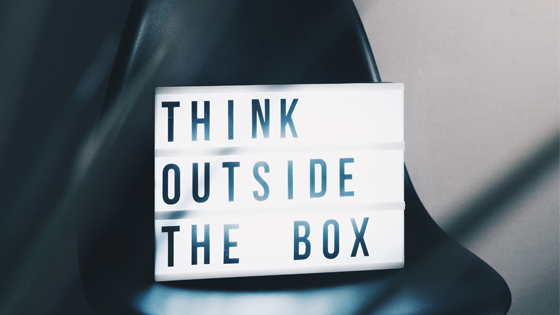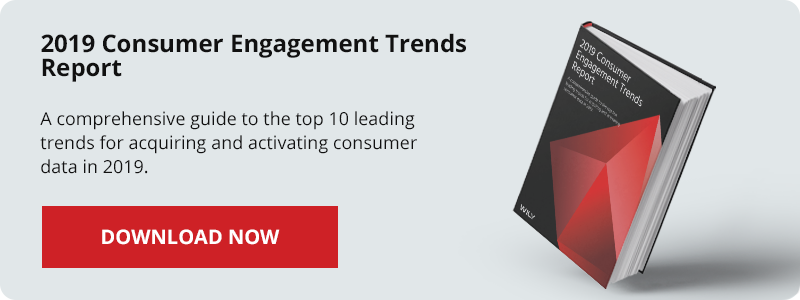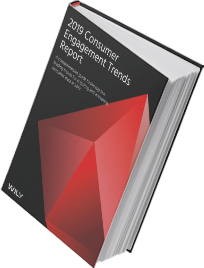Is your brand doing enough to market itself in the 21st century? As communication channels evolve,...
Which Marketing Tactics Generate the Most Engagement?
 Customer engagement is an area that many brands struggle to harness. Less than a decade ago, earned media, or news media, was a solid marketing tactic for brands to gain trust and engage the general public. However, 59 percent of U.S. consumers said “fake news” is making them more skeptical of what they read and see. Therefore, marketers must get creative with how they approach engagement marketing, and cannot rely on editorial content to deliver the boost in sales they’re hoping to achieve.
Customer engagement is an area that many brands struggle to harness. Less than a decade ago, earned media, or news media, was a solid marketing tactic for brands to gain trust and engage the general public. However, 59 percent of U.S. consumers said “fake news” is making them more skeptical of what they read and see. Therefore, marketers must get creative with how they approach engagement marketing, and cannot rely on editorial content to deliver the boost in sales they’re hoping to achieve.
Additionally, engagement often gets overlooked as an important part of the customer journey. But the most successful organizations know better. They understand that engagement unlocks the key to driving long-term business results. If you’re a marketer looking to engage consumers for your brand, then you’ve come to the right place.
Here, we will outline a few of the best marketing tactics that generate the most consumer engagement today.
1. Co-Branding and Affinity Marketing
Co-branding is a marketing methodology in which at least two brands join together to promote and sell a single product or service. The brands, who usually share similar buyer personas, but are in different categories, join forces to increase the perception of the product or service’s value. This creates more value to each respective brand, encouraging consumers to pay a premium versus competing products.
Why it engages: Not only does co-branding cast a wider net across a larger audience, it ultimately increases brand affinity. Customers interpret co-branding as an endorsement from a brand they already trust, thus motivating audiences to engage with a brand they might normally overlook.
2. Point-of-Purchase (POP) Marketing
Point-of-Purchase marketing (or, POP marketing) sells to a captive audience – those shoppers already in-store and ready to purchase. Now is the perfect time to influence the details of their purchasing decisions. Some examples include product demos, sampling stations, and other experiences in-store that drive a consumer to purchase.
POP marketing doesn’t stop in-store either. Amazon.com uses POP marketing by incorporating “Add-On” items that are hard to pass up when you’re ready to make a transaction.
Why it engages: Oftentimes consumers browse while they shop for specific items, realizing they never thought about a certain product but through effective POP marketing, it suddenly becomes a necessity. Reports show that 5 of 6 in-store shoppers admit to making unplanned purchases and POP is an effective way of reaching those individuals.
3. Social Networks and Viral Marketing
Content is king, and social media marketing provides users with the content they find valuable and want to share across their social networks. This organic engagement results in increased visibility and traffic for brands. Additionally, the more content that brands share across social media, the more it influences Search Engine Optimization (SEO) efforts. New, relevant content takes priority over stale content, and by having an continuous presence across networks like Facebook, Twitter, YouTube and Instagram, search engines like Google and Yahoo will continue to rank your brand higher in search results.
Why its engages: Today, consumers would rather to their own research about a brand, instead of being sold to. Entertaining and educational content provides the resources consumers are looking for without directly selling a product. This positively reflects brand perception, and 52% of B2C companies report that social media positively influences revenue and sales.
4. Storytelling
Brand storytelling uses a familiar communication format to engage consumers at an emotional level. Rather than just spew facts and figures, storytelling allows you to weave a memorable tale of who your company is, what you do, how you solve problems, want you value and how you engage and contribute to your community and the public in general.
Why it’s engages: Storytelling provokes a response from the consumers’ inner most thoughts and feelings. Research indicates that 65% of people who feel an emotional connection to a brand say its because “they care about people like me” and storytelling helps to achieve this. When a brand reveals a caring thoughtful image, consumers feel more comfortable spending money where they are “seen”.
White Paper: Consumer Engagement Trends Report
Companies connect data and content to deliver on the notion of personalization. This report assists brand marketers and agencies looking to engage consumers in the digital-first era. It outlines 10 emerging trends and technologies that marketers need for personalizing communications along the customer journey.
WHAT’S INSIDE:
- The Value of Data-Driven Creatives
- 5G and Mobile-First Marketing
- Leveraging The Internet of Things (IoT)
- Experience-Driven Marketing
- Plus, So Much More!





